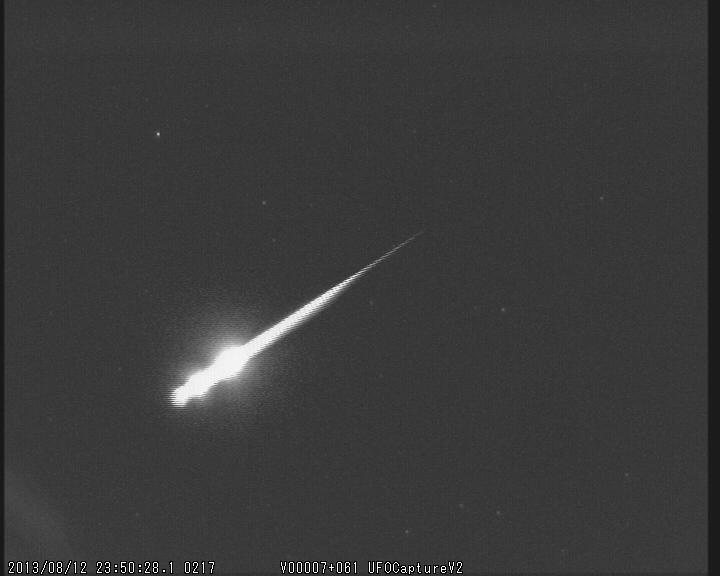Where do meteors come from ? Two members of FAS aim to find out.
“Where do meteors come from?” At one level that is an easy question to answer. Most meteors are produced by particles of dust left behind by a comet and they become visible as they enter the Earth’s atmosphere. We get meteor showers at predictable times of year as the Earth’s orbit intersects the trail of the debris from various comets. Most recently we had the Perseids shower caused by debris from a comet called Swift-Tuttle which last passed this way in 1992. But are all meteors from comets ? What about meteors which are not so obviously associated with a well-known shower – where do they come from ? Richard Kacerek and Peter Campbell-Burns of Farnham Astronomical Society are setting up the UK Meteor Observation Network (UKMON) and one aim is to investigate these.
About UKMON
The principle behind UKMON is simple. Keen meteor catchers install a CCTV style camera on a suitable wall of their house which records continuously and saves any and every movement event it sees. In amongst the recordings of cats, moths etc, it will capture every meteor in its field of view. One recording of an event is of limited value. The point of the network is that the same meteor might be captured at different locations and its trajectory, as seen against the stars in the night sky, will appear to be slightly different at each place. Some clever software can use these differences to calculate its exact path through the atmosphere as it is “burnt up”. This short section allows the full orbital path of the meteoroid (the correct name of the body before it hits our atmosphere) to be mapped out. You can then compare this path with that of known comets and decide on the parent comet of the meteor you’ve seen, or indeed decide that it is not from a comet at all but is what is referred to as a “sporadic meteor”. And all this using data from a CCTV on your back wall !



Richard and Peter are busy trying to recruit people to the network (get in touch via the link below if you want to get involved) and are setting up systems to handle and display the data. They have already got some interest from professional research groups who would like to use their data. They don’t lack for ambition; on August 12th, their new website UKMON live had its first big test during the Perseids meteor shower.
Here is an extract from that website :
Thanks to UKMON Live, a large audience was able to share in a magnificent display of meteors regardless of the weather at their location. Over the course of the evening we had over 11,000 visitors and more than 42,000 page views. Although around 67% of these visitors were in the UK, our audience was truly international. These visitor numbers are impressive when you consider that it is early days for UKMON Live .
This is a remarkable project for a small team of amateur astronomers to embark on. Yes, both Richard and Peter have day jobs and are undertaking their UKMON work essentially as a hobby. I’m sure many professionals would be pleased to run a project of this scope – there is nothing amateur about the implementation!
Click here to go their main website for lots more details about getting involved and examples of their images.
Talk given by FAS member Peter Campbell Burns
Post written by Katherine Rusbridge
Aug 2013
